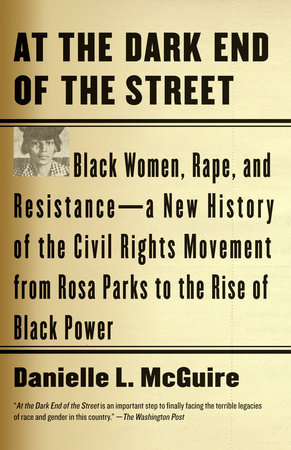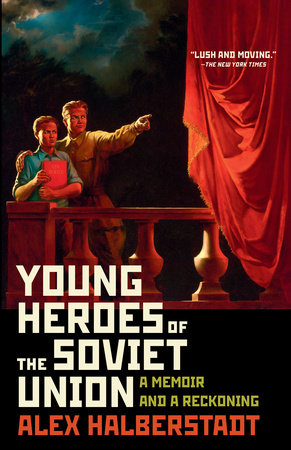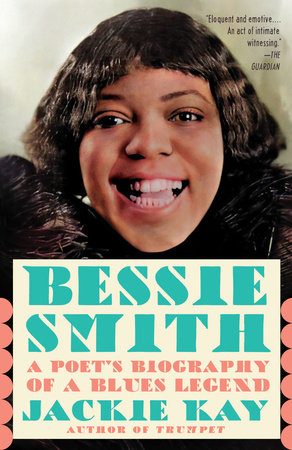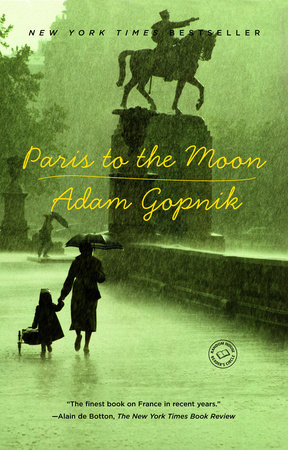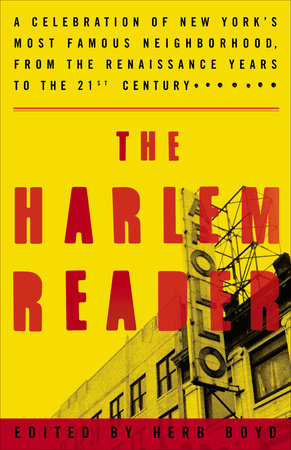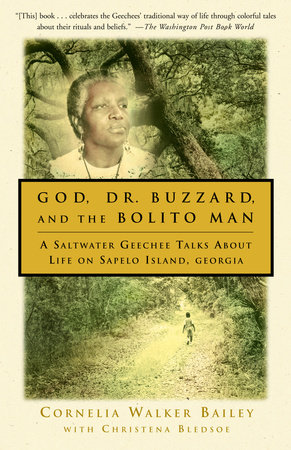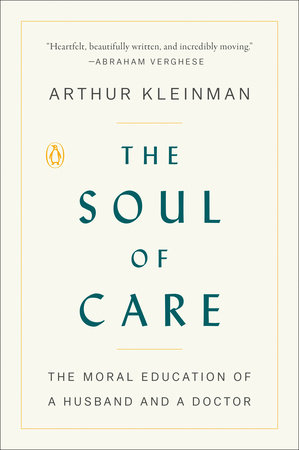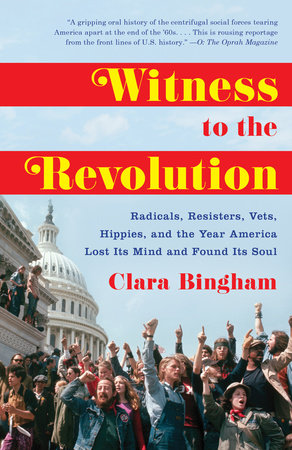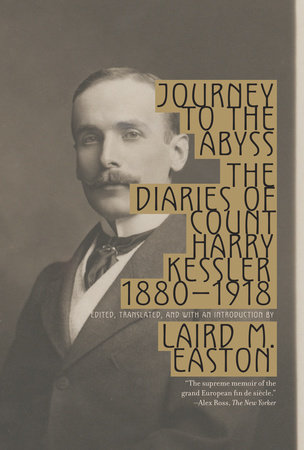Q: When did you first realize that this was a story you had to tell?
A: When I figured out that black women had been enduring, resisting and testifying about interracial sexual violence for years and that these crucial and revealing moments had never made their way into the history of the civil rights movement.
My first sense that historians had missed a large story was in the winter of 1998. I was a graduate student and was listening to NPR. Veterans of the 1955-56 Montgomery bus boycott were speaking about their experiences and Joe Azbell, the editor of the Montgomery Advertiser talked about a woman I had never heard of. He said something like, “Gertrude Perkins is never mentioned in the history books, but she had as much to do with the bus boycott as anyone on earth.” I was confused. Everyone knows Rosa Parks was the one who caused the boycott, so who was Perkins and what did she do? I went to the archive and ordered the Montgomery Advertiser on microfilm and started searching. I found out that two white police officers kidnapped and raped Gertrude Perkins, a black woman, in 1949. Local black activists rallied to her defense and launched a major campaign to bring the assailants to trial. I was not sure what to do with this information—how to fit it into a story that was already so well known. I couldn’t see how it connected until I started digging a little deeper. I was in the process of researching the 1959 gang-rape of Betty Jean Owens, a black college student at Florida A&M University in Tallahassee, Florida when I kept coming across similar cases of white men attacking black women throughout the Deep South. It seemed as if every front page of every black newspaper between 1940 and 1950 featured the same story: a black woman was walking home from school, work or church when a group of white men abducted her at gunpoint, took her outside of town, and brutally assaulted her. I began digging through court files and the evidence showed that white on black rape was endemic in the segregated South. Black women were vulnerable to racial and sexual violence and they often testified about their experiences—in churches, courtrooms, and congressional hearings. Their testimonies often led to civil rights campaigns that began with a simple demand for justice and became a struggle for human rights and human dignity. This was true in Montgomery as well as other major movement centers.
Black women had been telling their stories for years and it seemed to me that no one was listening.
Q: What was the most surprising thing that you discovered?
A: The biggest single discovery was in the Alabama Department of Archives and History in Montgomery. That’s where I found concrete evidence connecting Rosa Parks and Recy Taylor, and showing that the Committee for Equal Justice for Mrs. Recy Taylor in 1944 was the kernel that eleven years later became the Montgomery Improvement Association, launched the bus boycott and lifted Martin Luther King, Jr. to world-historical status. I was completely shocked to find Parks’s petitions and postcards demanding justice for Taylor, because it had never been part of the story. It made me rethink what I thought I knew about Rosa Parks and helped me begin to think about the bus boycott in a new way.
I am still surprised and saddened by the alarming regularity of white on black rape in the segregated South. When I first started this research twelve years ago, I was focused on the 1959 attack on Betty Jean Owens in Tallahassee. I really didn’t think I’d find other cases. But once I began searching, I realized it happened all the time.
Q: Why do you think that so much of the history you reveal in this book has been absent from previous histories of the civil rights movement?
A: I think there are a couple of reasons. First, I think our own discomfort and silences surrounding sexual violence hinder our work as historians. For example, we don’t ask civil rights veterans questions about rape or other kinds of sexual violence because we assume they don’t want talk about it. We assume silence even though black women testified publicly about these crimes in the past. And so, I think some historians have just ignored the evidence. Second, historians have tended to focus on prominent civil rights organizations like the NAACP, SNCC, and SCLC; nationally recognized “leaders” like Martin Luther King Jr., Rev. Fred Shuttlesworth Medgar Evers, Malcolm X, etc.; major campaigns like the 1955-56 Montgomery bus boycott, King’s 1963 Birmingham campaign, the 1964 Mississippi Freedom Summer, or the 1965 voting rights march in Selma; and the role of Congress and the President in passing laws to advance African American equality.
When there is a focus on racial violence, it is almost always directed at black men. Historians have assumed that black women were safer and less vulnerable to racial violence than black men. And that may be true in cases of lynching, though black women were certainly lynch victims, but not when we look at sexual violence.
There have been some really incredible studies of grassroots movements that highlight the organizing efforts of ordinary people—especially the leadership and experiences of black women—that expand our understanding of the African American freedom struggle. These studies certainly helped me rethink the movement as a whole, and encouraged many of us to think about the human side of the movement, so I think that we are finally starting to get a more realistic and thorough sense of the civil rights movement and the people who made it happen.
Q: One of the key points that you emphasize is that sexualized violence and rape had been engrained within race relations in the U.S. since the days of slavery. How did segregationists use this dynamic in their efforts to oppose integration?
A: They turned it on its head. They projected their own crimes and deviant behaviors onto black men and women in order to maintain their own political, economic, and social power. Whenever African Americans asserted themselves as human beings or demanded citizenship rights granted by the Constitution, white Southerners—from Reconstruction through the 1960s—used myths of black men as rapists and white fears of “miscegenation” to derail and destroy African American freedom struggles.
Q: You open the book with an account of the brutal gang rape of a young mother named Recy Taylor. You’ve actually spoken with her and her family. How did you find them?
A: Incredibly, they found me. Robert Corbitt, Recy’s youngest brother, spent decades trying to dig up information on his sister’s assailants. He combed through old files at the courthouse and scanned microfilm of Abbeville’s newspaper at the library searching for clues—dates, names etc. He asked friends and neighbors what they remembered. He never forgot about what those white men did to his sister; to his whole family. Over time the pain and trauma of the assault, not to mention the injustice, dulled, but never disappeared. One day he searched “Recy Taylor” on his computer and my name appeared. I was giving a presentation at the Center for the Study of the American South at the University of North Carolina and there was a poster announcing the event on their website. He emailed me and I called him immediately. We talked many times on the phone throughout the fall and winter of 2008. I met him and Recy and their extended family in Abbeville, Alabama the same day Barack Obama took the oath of office as the first African American president. I am so grateful Recy felt comfortable telling me her story and that her entire family recounted their memories of both the crime and what life was like during Jim Crow. It was an emotional and powerful meeting that I will never forget.
Q: One of the great strengths of At the Dark End of the Street is the attention you pay to individual lives and personal stories. Did you find that people were willing to talk to you freely about their experiences?
A: Yes. Which makes it even more shocking that most histories of the civil rights movement ignore issues related to sexualized racial violence. Not only did women tell me their stories, they had been telling them to all kinds of people—for decades. Read the front page of any black newspaper during the Jim Crow period and you will find endless testimony by black women about being sexually propositioned, harassed, beaten and raped by white men throughout the South. There were, of course, some women who did not want to talk or rehash a painful period in their lives. But most of the women I interviewed spoke freely about their experiences. Some seemed relieved of a heavy burden; some are still hurt and angry; and almost all of them still hope that justice will prevail.
Q: Aside from Rosa Parks, who were some of the other most prominent female organizers of the time? How did their early efforts help lead to the Montgomery bus boycott?
A: Perhaps the most prominent female organizer in the civil rights movement was Ella Baker. She had a hand in nearly every mass march, boycott, voter registration campaign, sit-in, protest movement, etc. from 1940 through the late 1960s. There are two good scholarly books about Baker, and historians generally appreciate her importance, but popular history has largely forgotten her.
In Montgomery, Jo Ann Robinson was an incredible organizer who probably did more to organize and sustain the yearlong bus boycott than anyone else. But the women who really made the boycott possible were those “nobodies from nowhere” as Georgia Gilmore, a local cook and activist put it. She was talking about the masses of working-class black women—domestics, cooks, service workers—who chose to walk endless miles every day instead of riding the buses to demand equal treatment, respect and human dignity. They made the boycott possible.
Q: Many of the campaigns these women organized were built to support victims of rape when their attackers were on trial. How did they select the cases that would have the most impact?
A: It was actually their organizational effort that often forced local white leaders to hold trials. Without pressure from African Americans and their allies on both the local and national level, there may not have been any court hearings at all.
Organizers and activists often rallied behind women who spoke out. When they made decisions about launching campaigns, they did so based on local circumstances—the threat of white retaliatory violence, the potential for justice, the ability and willingness of local organizations like the NAACP to provide support, publicity and much needed funds, the strength and character of the victim and her family, and so on. Every town in every state was different. And every year brought new opportunities or setbacks for equality.
Q: Black men accused of raping white women were frequently convicted and sentenced to death (even when there was very little evidence of rape or when the sex seemed to have been consensual), whereas white men accused of raping black women were often acquitted or given light sentences. When and how did the tide begin to turn?
A: There were always women who were willing to fight back and they often had support from family, friends, and community members. And there were always women who kept these tragedies to themselves. But there are moments in history when the pain of violation or the opportunity for justice forced women to speak out against their abusers. In this respect, the World War II period served as a watershed for the African American freedom struggle. At the same time that African Americans launched voter registration campaigns, sit-ins and boycotts, they also fought for basic dignity and bodily integrity. Black women’s testimony about sexual violence and the willingness of black leaders to protect black womanhood were part of the myriad resistance movements that began during that time. As a result, more white men were put on trial for the rape of black women in the 1940s and 1950s—and actually punished for their crimes. At a certain point—maybe after the 1959 Tallahassee, Florida case or the 1965 Hattiesburg, Mississippi case, white men in the segregated South may have realized they could no longer have access to black women’s bodies with impunity. Civil rights campaigns in Birmingham in 1963, Mississippi in 1964 and Selma in 1965 exposed the brutality of Jim Crow and helped weaken Americans’ tolerance for racist violence. And of course, the NAACP and their Legal Defense Fund spent significant energy and resources on exposing and ending the unequal sentencing in cases of sexual assault and rape. But we cannot forget that it was mostly black women, whose silent resistance and sometimes bold testimony helped to end a system of racialized sexual abuse that existed since slavery.
Q: Have you encountered any criticism for bringing these stories into the light?
A: Not really—most of the people I talk to are grateful the story is finally being told. There will always be some folks who are uncomfortable talking about the horrors of our past, especially sexual and racial violence. And I can understand that. But I think we need to confront our history honestly. Sexual violence was a critical part of the subjugation of African Americans in the South—in fact, it is endemic to systems of caste throughout world history. We can try to pretend that these brutal crimes did not happen, but they did. Many of the survivors I write about are still alive. Their assailants are still around—some are in jail, but most are free. For them, the past is, as William Faulkner put it, “not even past.” Some will undoubtedly think that retelling the rape stories is lurid and unnecessary, that it reifies the violence. But I cannot silence women today whose voices were so powerful and important then. In many ways, I am just offering them a megaphone. And I think it’s time we listen.
